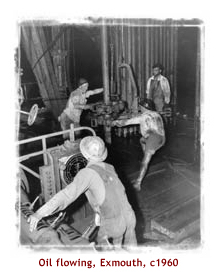 |
Boom State
 In the 1960s the Western Australian economy experienced a boom due to a massive increase in the types and volume of minerals being mined. Since 1890 gold had been the leading resource mined and exported from the State, but the discovery of huge new deposits of coal, iron ore, nickel, alumina, mineral sands and oil and gas in the 1950s and 1960s led to the development of new mining ventures. Export of iron ore began in 1966, the same year nickel was discovered at Kambalda, while the mining of mineral sands (1957), bauxite (1964) and oil (1966) all commenced in this period. In the 1960s the Western Australian economy experienced a boom due to a massive increase in the types and volume of minerals being mined. Since 1890 gold had been the leading resource mined and exported from the State, but the discovery of huge new deposits of coal, iron ore, nickel, alumina, mineral sands and oil and gas in the 1950s and 1960s led to the development of new mining ventures. Export of iron ore began in 1966, the same year nickel was discovered at Kambalda, while the mining of mineral sands (1957), bauxite (1964) and oil (1966) all commenced in this period.
As a result of the mining boom, Western Australia's position within the
Commonwealth changed. The rapid development and exploitation of its mineral
resources during the 1970s transformed Western Australia from a recipient
State dependent on Commonwealth grants financing government programs into
one of the wealthiest States in the Commonwealth. By the turn of the century
Western Australia contributed 28% of the nation's export earnings through
its mining and farming industries.
With the turnaround in Western Australia's financial fortunes, secessionist
feelings of resentment towards the federal government did not change. Complaints
about Western Australia's position now focussed on the Commonwealth taking
more than its fair share of the wealth of Western Australia.
|
 |